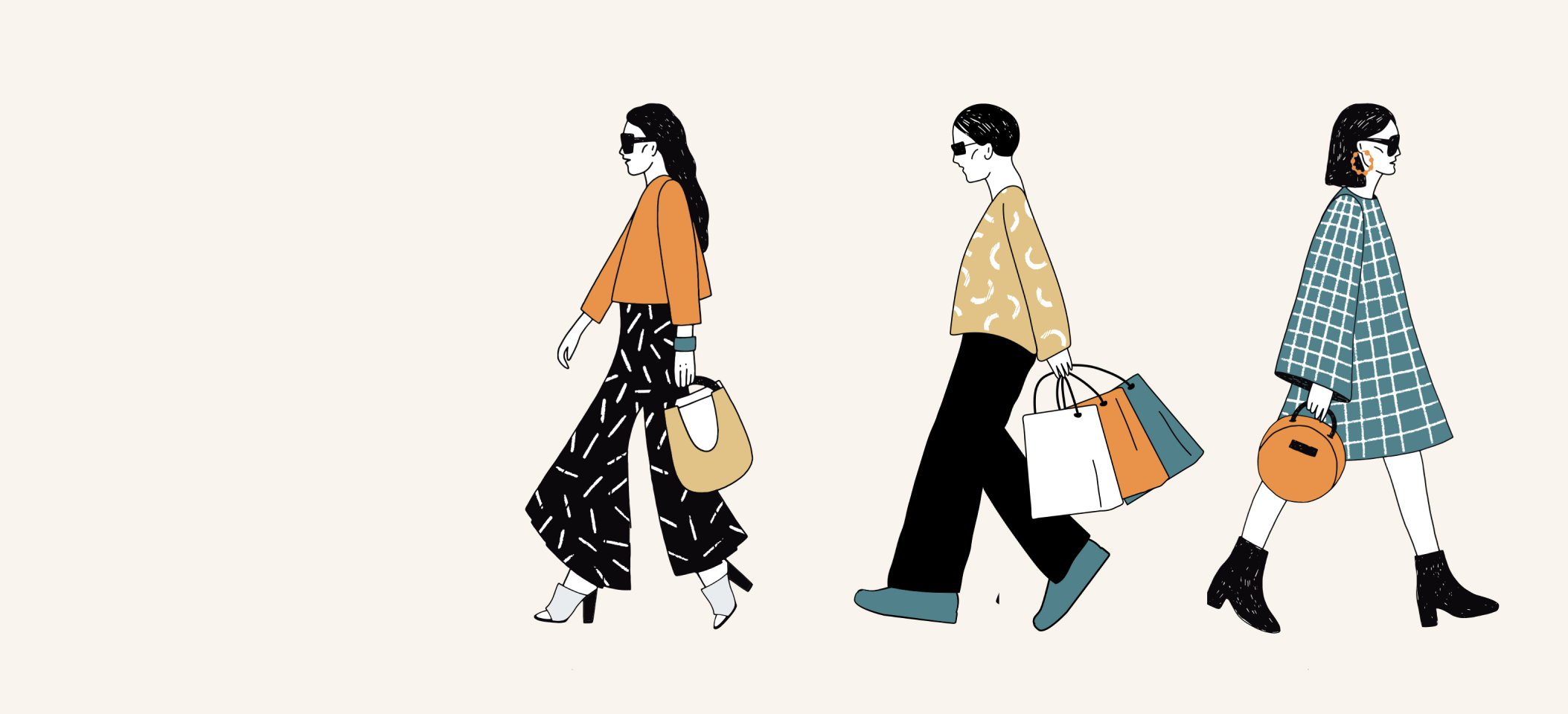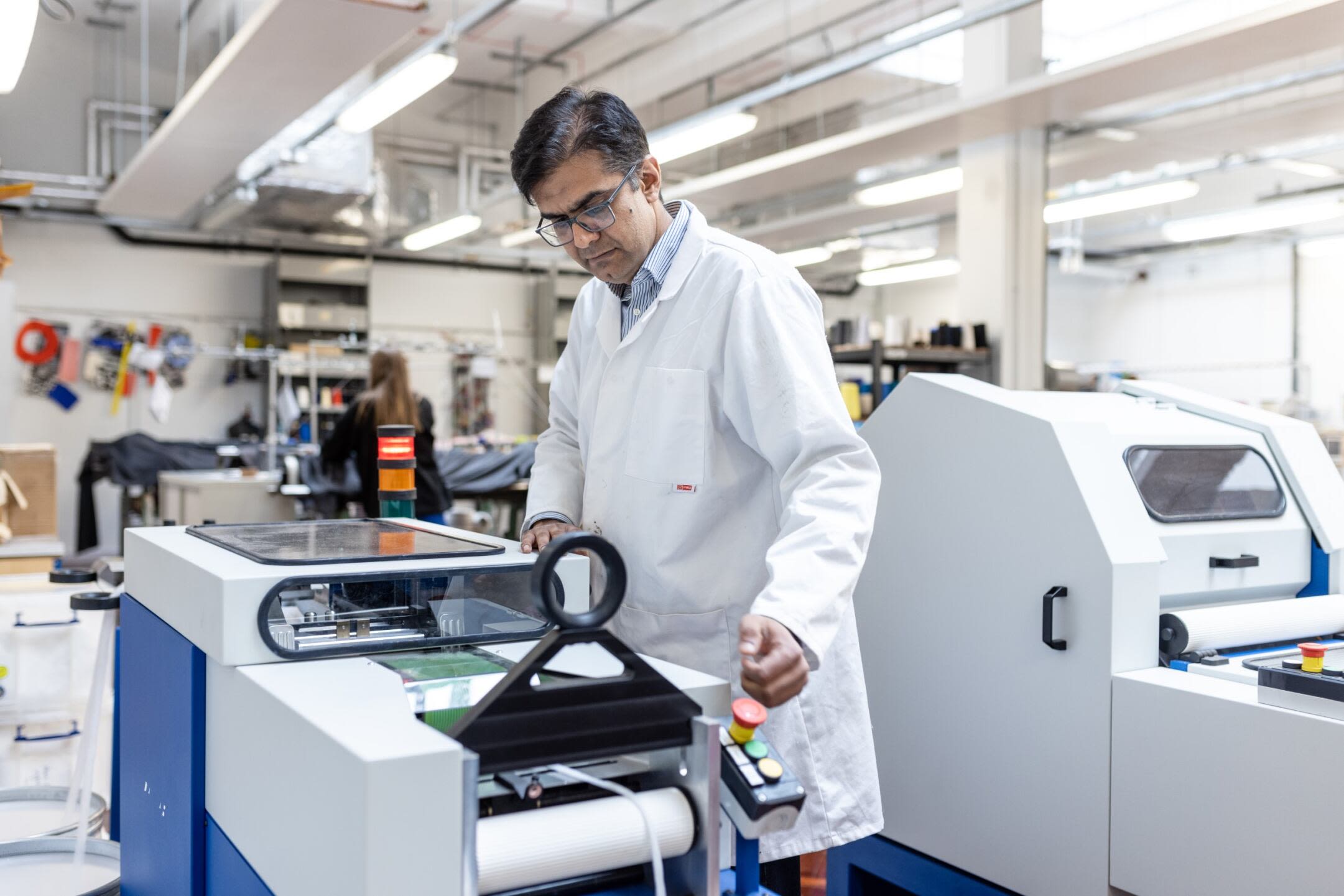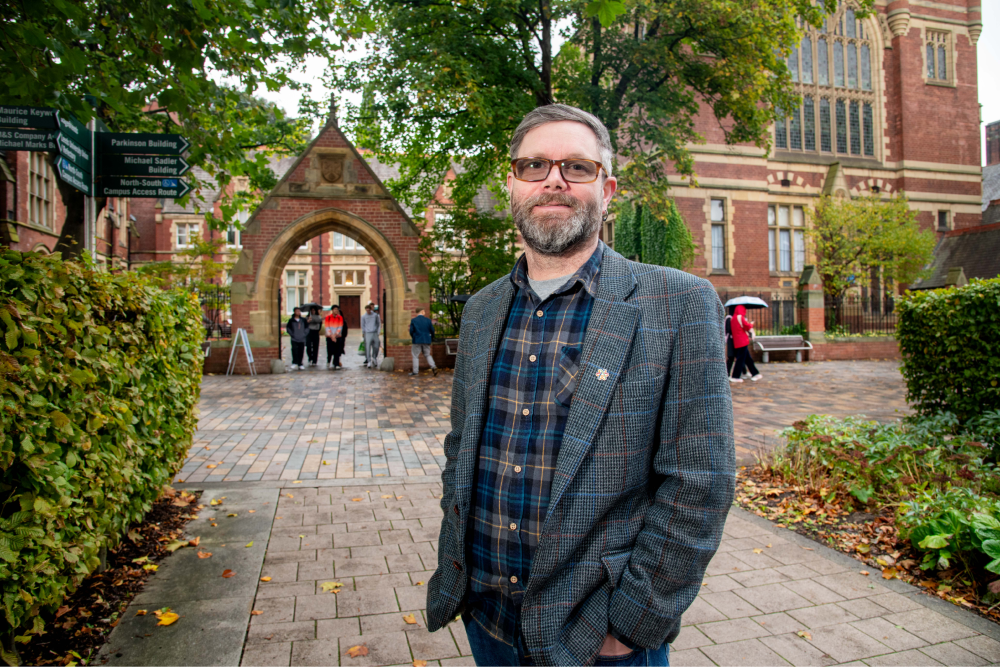Does
fashion
have to cost the earth?

In the UK, we buy about a million tonnes of clothing every year, just under half of which ends up incinerated or sent to landfill.
UK consumers are also responsible for about another half a million tonnes of textile waste created during the manufacturing process both here and overseas, while textiles made for our consumption release around 20 million tonnes of carbon emissions.
And that’s to say nothing of the resources of water and land being used to create these garments, the pollution caused during the manufacturing process, or the microplastics they shed into rivers and oceans.
Our work is about tackling some of these big issues by creating a circular economy in textiles. Unfortunately, a ‘circular economy’ has become synonymous with recycling, whereas in fact, in a circular economy, recycling is the very last resort. Re-use is far better.
So what’s really at the heart of this is consumer behaviour. Take how we buy clothing. Many retailers offer free returns, so people will buy six different sizes and eight different colors of the same item, choose the one they like and take the rest back. We explored what happens to all these returns, and there’s plenty of evidence to suggest most of them are simply thrown away.
Look at our wardrobes. The average person has 100 items of clothing, and we buy about 40 new pieces of clothing a year. If we don’t reduce the size of that wardrobe and reduce the amount we consume, then we’ve got no chance of achieving a circular economy. Any savings we might make through low carbon energy, making greener fibres and through recycling are all outstripped by this continual growth.
700,000
Microplastic fibres can be released by a single laundry load of polyester clothes

I’m not saying recycling isn’t important or looking for fibres that cause less damage to the environment isn’t important. They’re part of the solution, but the root of the problem is this desire to consume. We have to ask ourselves why people live these lifestyles.
There’s no burning evolutionary process that requires us to buy 20 cheap T-shirts at once. It’s simply because that’s what society tells us will make us happy.
We have a multi-billion-dollar advertising industry based on the premise that we won’t be happy unless we keep consuming. So we need to help convince people they can derive happiness from a more sophisticated kind of purchasing where we change the experience of buying and owning clothing to one where we cherish what we have, rather than replacing it.
Instead of having a T-shirt, wearing it twice and then discarding it because we no longer perceive it has any value, even though it's still in perfect condition, could we decide to keep it and cherish it? We can all think of a favourite jacket or pair of trousers that we've kept for longer than other items of clothing.
To really make a difference, the brands and the retailers need to be key players in this, and a lot of the work we are doing is co-produced with major brands, retailers, fibre producers and lots of small and medium enterprises. Leeds Institute of Textiles and Colour has developed fruitful relationships with producers and retailers over many years – and they genuinely want to be more ethical producers and environmentally-friendly retailers.
Perhaps surprisingly, many businesses have absolutely bought into this and want to reduce their environmental impact. It’s not just in textiles: in many areas, industry is moving faster than government because they see the writing on the wall. If you have a planet which no longer operates, it’s going to be extraordinarily difficult to make any money.
So the more progressive textiles producers and retailers are exploring how to make money from attaching experiences or other values to these molecules of cellulose or polypropylene, while having fewer of them flowing through the system.
And one of the great things about the clothing industry is the ability to do exactly that. To a material scientist such as myself, there’s no difference between a Primark T-shirt and a Vivienne Westwood T-shirt. The molecules are the same, their construction’s the same and very often the weight of the material is the same, even though one retails for £1 and one for £100.
Within the clothing and fashion industry, there's already that ability to add experiences and value to products, over and above the cost of their production.
It’s about persuading people to purchase things that give them joy beyond the act of buying them. To decide: “I’ll buy these jeans or this tailored jacket; they might be a bit more expensive, but they look nicer and they'll last me longer. I’m going to spend extra money on shoes I can take to the cobblers when they need mending.”
You get your buzz not by consuming more and more molecules, but by consuming smaller amounts of much higher quality clothing.
There’s a great hope within the industry that it can help consumers decide to keep a garment for four years instead of two, or say: “I want this to stay with me throughout my life journey; I’m going to repair it and upgrade it.”
So each garment – for which carbon is released to the environment, arable land kept away from people who are hungry and water denied to those who are thirsty – remains in use as long as possible.
Changing the future of textiles
The University’s planned Sustainable Textiles Research Accelerator will tackle a series of key environmental challenges.
Through the generosity of Leeds alumni and other supporters, we are planning a series of research projects over five years to deliver innovations which will enable the transition to a circular economy in textiles. It will develop new renewable materials and fibres, digital tools, fibre processing and production processes, as well as innovative recycling techniques.
It will address a series of key research questions, exploring how the fashion and textiles industries can:
- Move away from extracting non-renewable, fossil-based resources;
- Develop a zero-waste industry;
- Address over-production;
- Establish viable circular economies;
- Develop new recycling technologies;
- Harness digital technology to design less environmentally impactful products. post-consumer textiles, crop residues and household waste into renewable fibres.
Learn more about the Sustainable Textiles Research Accelerator


Professor Phil Purnell
Phil Purnell is Professor of Materials and Structures in the School of Civil Engineering and has published on a wide range of topics from concrete to waste management, bio-materials to the circular economy. He leads the University’s Back To Baselines in Circular Fashion and Textiles project, funded by The Natural Environment Research Council, which is working to quantify the sustainability status of Britain’s fashion and textile sector.